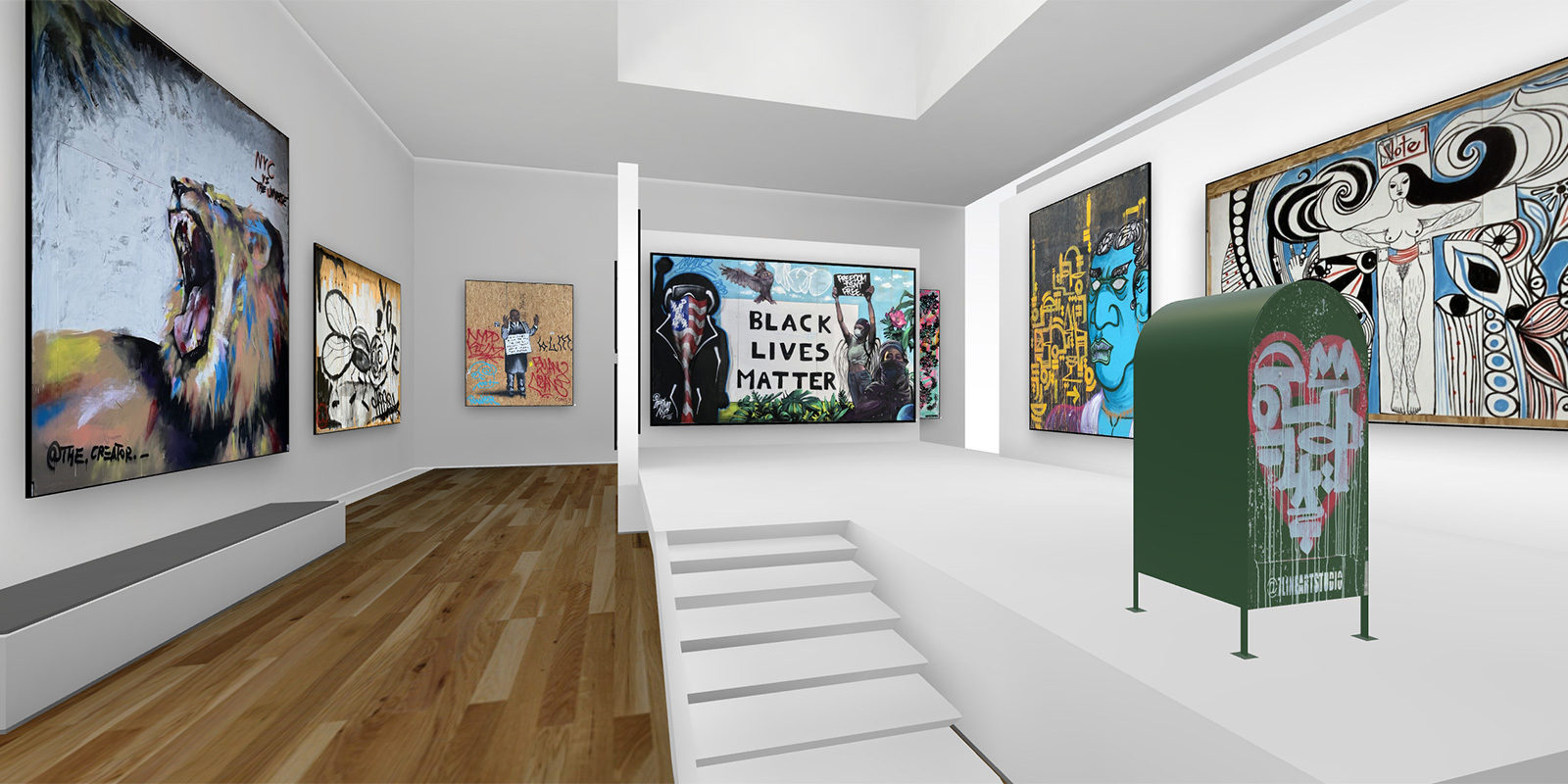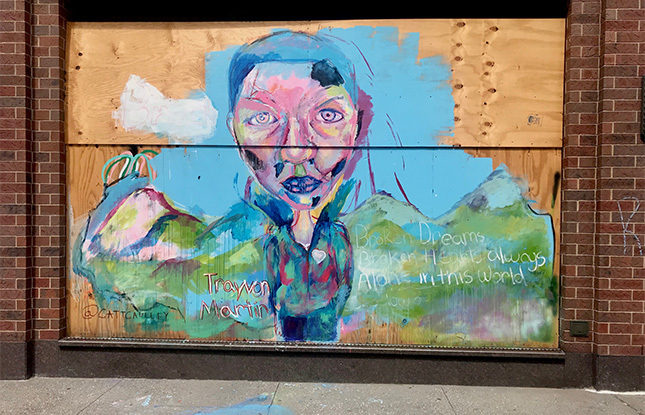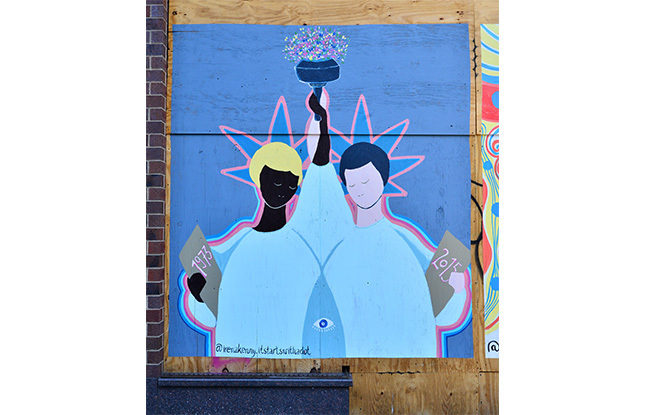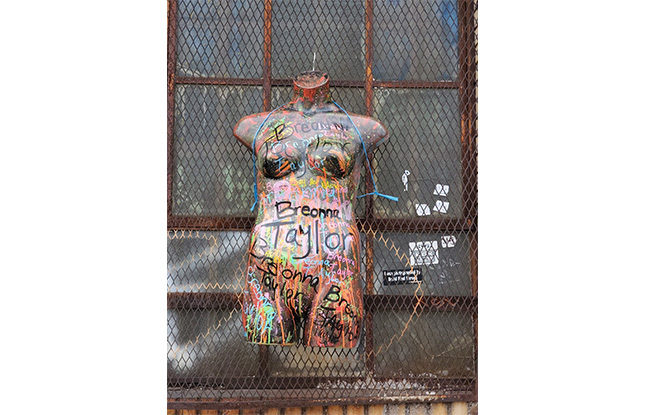In the summer of 2020, Will Bernstein was walking down a street in New York when he noticed it: As part of their job, a group of construction workers prepping to reopen a boarded-up business were taking down a piece of plywood that an artist had converted into a Black Lives Matter mural and were preparing to toss it in an industrial dumpster.

“I thought to myself, one, that's a beautiful piece of art,” says Bernstein, a 2018 Classical and Near Eastern Studies graduate. “Two, this is a piece of history. This is something so significant.”
At the time, huge swaths of the city, from midtown to downtown, had been boarded up with blank plywood boards, creating a monotone and depressing environment. Sparked by the murder of George Floyd in Minneapolis, Minnesota earlier that year and a growing unrest leading up to the 2020 Presidential election, artists and activists turned the boards into canvases for social and political messages and graffiti-based dialogue on topics like civil and voting rights, racism, and police violence.
“It turned a grim New York City into a vibrant environment where no matter where you looked, you would see one of these pieces demanding positive social change,” says Bernstein.
What Bernstein witnessed, however, soon grew into a troubling trend. These historic pieces were being taken down, destroyed, or, in some cases, stolen off the walls by thieves.
Bernstein, who had moved back to his native New York after graduation, had just left a gig working with a nonprofit that paired professional artists and underserved youth to create public murals.
The moment felt like a different kind of sign to him.
“Because these pieces were constantly being desecrated, stolen, or defaced, I knew that we had to find some way to preserve these pieces of history,” he says. “Even if we couldn't get the physical boards themselves.”
Bernstein and his colleague, El Hadj Dieng, founded a company called MXD WRLD, and made it their mission to recover and store as many pieces of the thousand-plus protest art as they possibly could, and create 3D scans of the rest. Bernstein connected with David Lynshue, the Founder of Capture It In 3D, a 3D scanning company in Brooklyn. Lynshue collaborated with Bernstein and Dieng, who similarly recognized the social and historical importance of this movement emerging in New York City.
Over the past year and a half, they’ve aided in the recovery of more than 65 physical works and compiled more than 250 scans and counting, uploading them to MXD WRLD’s free and accessible 3D Virtual Corona Art Gallery.
The project has required a lot of quick leaps to action and a lot of quick U-Haul rentals. In the beginning, Bernstein would field calls from artist collectives upset that the murals they created were being removed, and Bernstein would rush to recover them.
“This is New York City’s 2020 Berlin Wall, where anybody was free to express their thoughts on plywood boards put up out of fear,” says Bernstein.
Some recovery has required both legal and detective work. At one point, model and influencer Bella Hadid took an Instagram photo in front of an artist’s mural featuring the late Supreme Court Justice Ruth Bader Ginsberg. Within a few hours, someone had driven by and stolen it off the wall. Bernstein and Dieng, along with a number of the artist collectives, individual artists, and other like-minded organizations, are trying to locate more than 100 pieces of stolen public art and reunite them with the artists who painted them.
3D scanning has allowed Bernstein and Dieng to capture not just flat murals but other, more unusual types of public art, like police barricades that had messages painted on them, and mannequins, mailboxes, and doors.
“That is the beauty of technology. Somebody can destroy a piece of art on the street, but once a piece is 3D-scanned, nobody can,” Bernstein notes.
Bernstein and Dieng made the decision to scan each piece of artwork exactly as it was—including the works that had been defaced or augmented by critics and supporters. Such as a mural of Martin Luther King holding a sign of one of his famous quotes that had been defaced by individuals protesting police violence.
“That's all part of the story,” says Bernstein. “I'm not here to even tell the story. I'm here to be the conduit to say this is exactly what happened in New York City. Make of it what you will.”
It isn’t lost on Bernstein that he’s a Classics major who’s found himself working to preserve aspects of a critical juncture of history. But he also sees the connections to the ancient pieces of Greek and Roman art he studied as an undergraduate.
“This is a different type of public art, rather than, say, a statue of Athena,” notes Bernstein, who honors his roots as a Classics major by tutoring students in Latin in New York City. “But all of those brilliant ancient pieces of art have always led me to have a strong appreciation for public art.”
Preserving murals and public art in New York is only one of MXD WRLD’s many projects. Bernstein also 3D scans artwork at festivals with social impact in other cities, like the Free City Mural Festival in Flint, Michigan, attempting to shift the focus from the site of an ongoing public water crisis to a city with a vibrant art and music scene, or the Akumal Arts Festival in Mexico, with a strong emphasis on shedding light on the area’s endangered sea turtle sanctuary and the effects of climate change in our planet’s oceans. The New York project, however, remains front and center.
“At MXD WRLD, we are dedicated to assuring that although the plywood boards may be down from the streets of New York City today, the artworks and their messages will continue to live on indefinitely in the physical world, virtual world, and everywhere in between,” says Bernstein.




